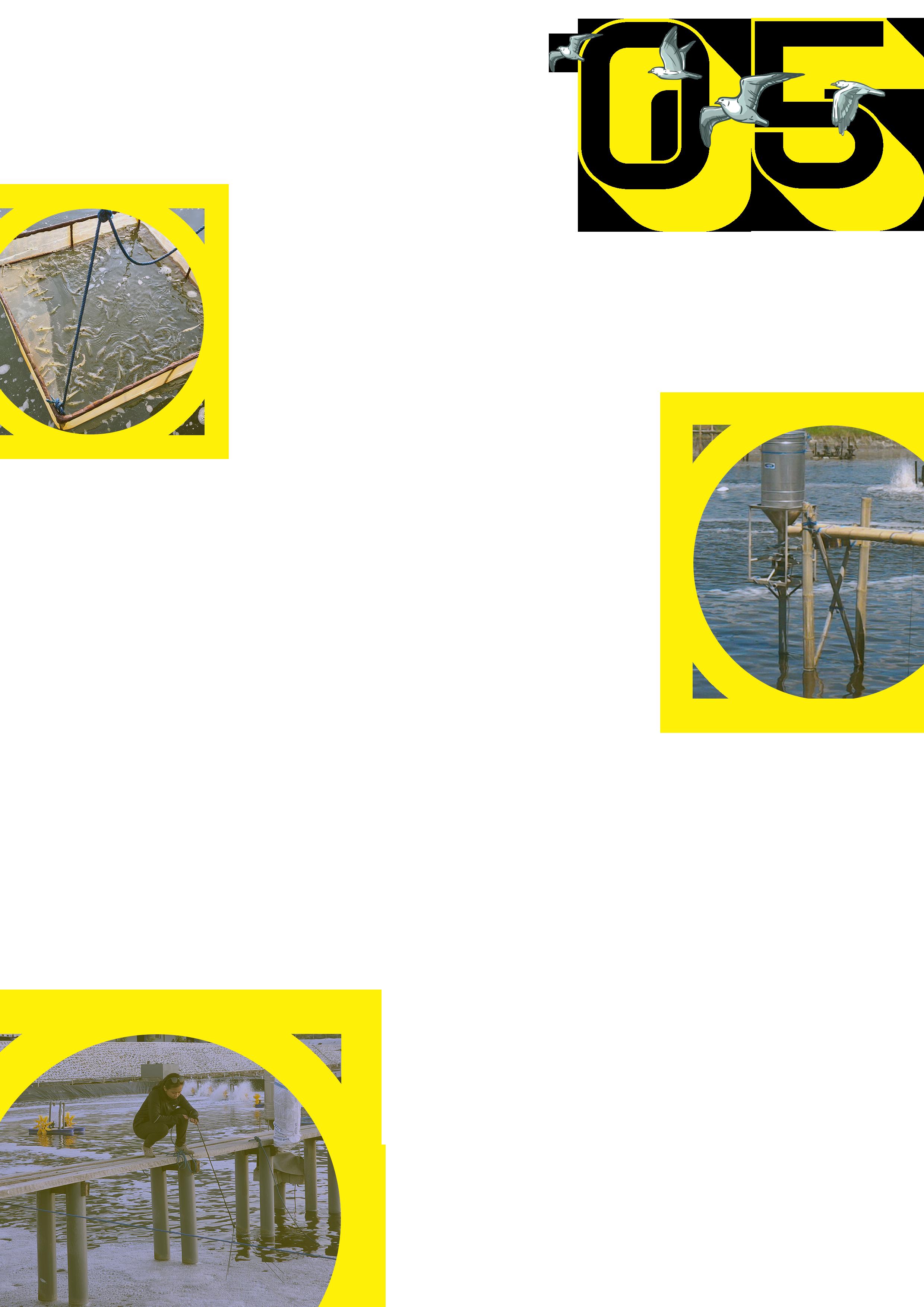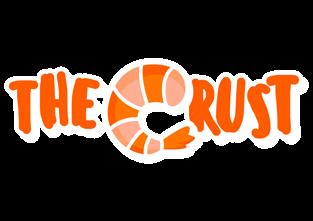
3 minute read
FISH SCHOOL
from THE CRUST - ISSUE #6
by THE CRUST

Feeding Frequency and Timing
For feeding frequency, more is always better. Spreading your daily feeding time will allow all your stock to get fed and preserve your water quality by reducing nutrient spikes inside the water.
Farmers who feed manually feed their shrimps 3-5 times daily. Typical feeding time in farms across Indonesia is every 4 hours from 7 am to 11 pm. This is the traditional feeding method and the most understood, especially in older practitioners.
By using auto feeders, the feed can be distributed more often. Though this method is objectively better, some farmers are still struggling to switch due difficulty of moving from the “usual” way. We also found some cases where the farmer overfed the stock because they thought the feed was always finished whenever they checked. Though using auto feeders can increase your traditional FR, there are still limits to what an animal can ingest daily.
A practical way to start learning using auto feeders is to take the same amount of feed that one would give in a given feeding time and distribute it evenly so that the whole auto feeder tank will be finished before the next feeding time starts. This can be used as a trial before the farmer increases feed intake.
For Example:

At 11 am, the farmer is scheduled to give 20 Kg of feed to the pond, and the following feeding schedule is at 3 pm. The auto feeder can dispel 300 grams of feed per second it operates.
The farmer targets the feed to be fully distributed at least 1 hour before the next feeding. Finishing the whole batch takes 20.000 grams: 300 grams/ sec = 66,67 sec.
Feed Check Shrimp Feeding II
So in 3 hours or 180 minutes, the auto feeder must operate
67 seconds or times.
180 minutes / 67 = 2,7 minutes live after a Indonesian Shrimp association decid developments is one of the industry, dedicat rising aqua events like industry peers President of PMI, aquaculture com industry players others. Besides started to up with this Mixscience has been Novation from solutions in one of that event is lagging in shrimp Ecuador. But shrimp in initiatives are be Andrew Wijaya the VIV Asia into the latest However, because exhibition, shrimp farms in first time VIV overwhelming inter excitement at the so long due every two great suc showcase their with their cus hours with food industry is not it still has Therefore, it is not the future, aquaculture forward to come. successfully fa networking, knowl B2B interna press release visitors from and even Despite the glob of Covid-19 the Feed to significance represents markets and en stated Man three days, understanding of in The Aquat Aquafeed of variety of on the latest March 2025, platform for and innovate. event world top-quality
In conclusion, set the auto feeder to operate for 1 second every 2,7 minutes, or round it up or down depending on the farmer’s preference, as long as it is finished before the following feeding schedule.
Most farmers use feed trays to gauge the feeding appetite of their shrimps. The feed trays are spread around the pond, usually using two feed trays at minimum. Though as we will explain below, feed checking will differ between manual feeding and auto feeders.
On manual feeding, farmers have to set their Standard Operating Procedure (SOP) for how much feed they have to put into their tray and how long until they have to check. The SOP can range from 0,5%-2% feed put to the feed tray and one hour to two hours check time after feeding. The farmers must check the feed trays by the set time to see if any are left. This is crucial to gauge the shrimp’s appetite and maintain feeding efficiency. However, this becomes a problem when the farmer needs to check multiple ponds simultaneously. By the time they reach their final pond, the checking time would have shifted from the set target. The worst case that could happen in this system is when there is still feed left by the next feeding time. This is usually followed by cutting the feed amount or even stopping the feeding.
On Auto feeders, the checking SOP is less constricted. The farmer can check at any time because of the gradual feeding procedure. The shrimps should be fine as long as no feed is left at the subsequent feeding dispersion. But in cases where the stock refuses to be fed, farmers can simply turn off the auto feeders and salvage the remaining feed. By doing this, the farmers can reduce wasted costs due to uneaten feed.









